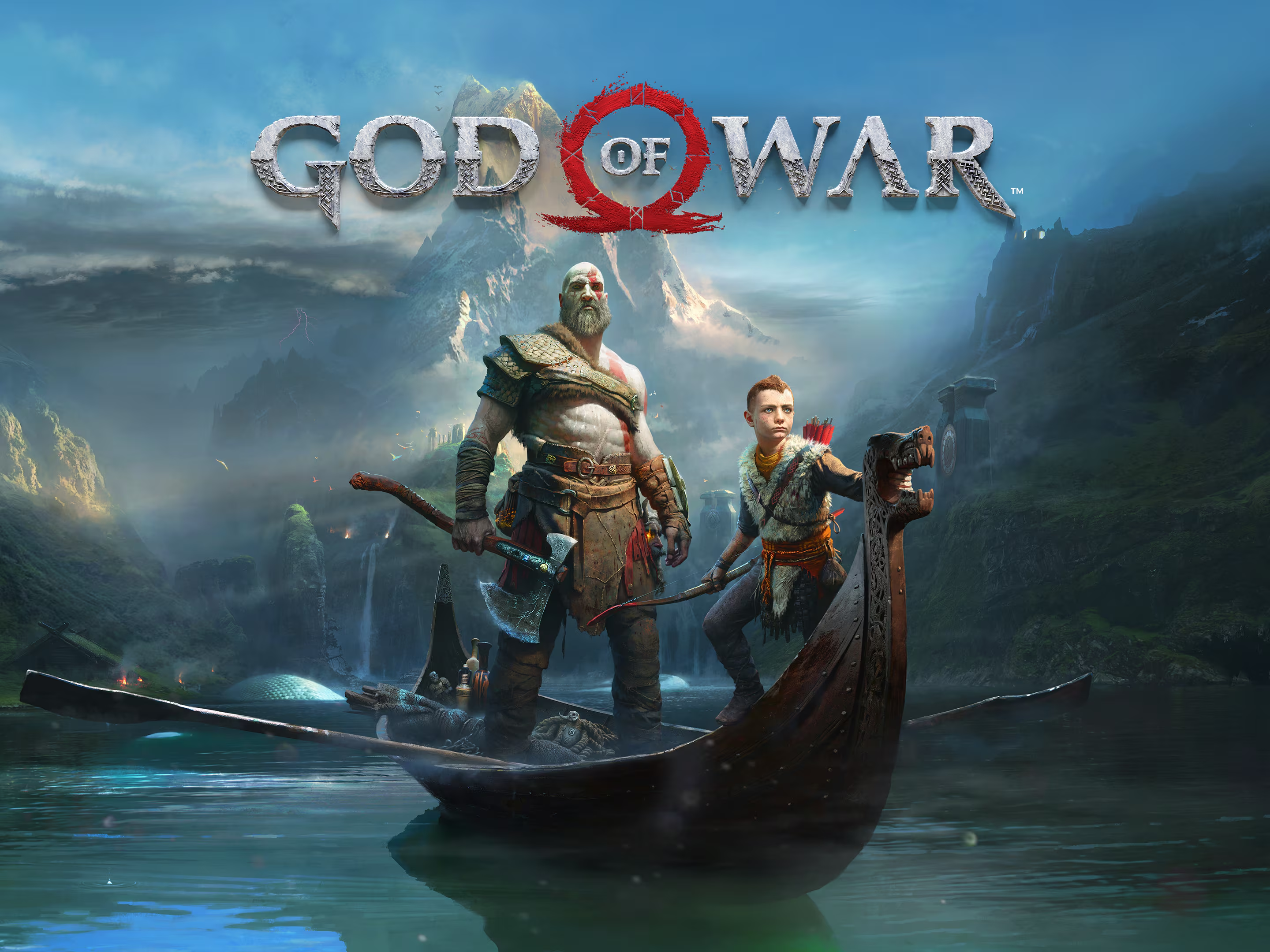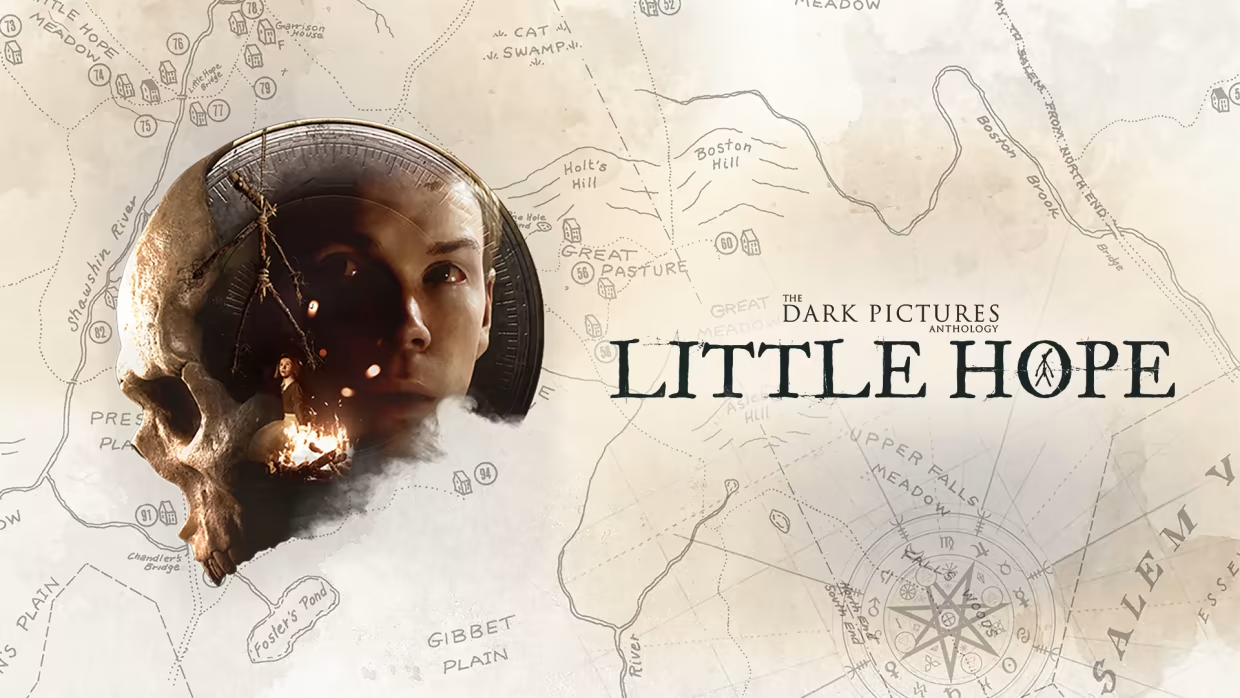Star Wars: Jedi Survivor
Star Wars: Jedi Survivor is an unremarkable sequel to Fallen Order, addressing some of its predecessor’s faults, but only slightly, for its real aim is to just offer a bigger, more complex experience.
The story still follows the Jedi Cal Kestis, now working alongside Saw Guerrera in the revolution against the Empire. After a job goes awry, however, Cal needs replacement parts for his ship and so lands on the planet Koboh, searching for his friend Greez. There, he stumbles into an abandoned temple that may contain a key to the location of the hidden planet of Tanallor, which Cal believes can be turned into a safe haven for all those persecuted by the Empire.
Cal spends most of the time in Jedi Survivor not fighting the Empire, but trying to find a way to escape it. Greez wants his friend to settle down and find a peaceful life, believing his current path of revolution will lead him to his death, but the Jedi believes it’s his duty to keep fighting. Tanallor, then, works as a compromise: by finding a way to reach the planet, Cal can still protect the people from the tyranny of the Empire but from a safe place, with the knowledge that only those with the map can reach Tanallor.

The narrative, however, suffers from the same pacing issue that plagued Fallen Order: basically, nothing happens for most of the game, with all the big important developments being cluttered together in the final hours. As soon as Call finds out about Tanallor and encounters the game’s main antagonist (which can also take a while to happen, depending on how we go exploring the maps), he just goes from one place to another in search of compasses and the like, defeating monsters and such, rescuing allies and so on and so forth. The obstacles are there to pad the length of the adventure and nothing more.
There’s little character development, after all, as the important side characters, such as his romantic partner, Merrin, and his newfound friend, Bode Akunda, remain in their respective zones, traveling together with Cal only during brief scripted sequences or in limited areas: Merrin, for example, only goes with Cal into the field if we are exploring a specific part of the vast deserts of Jedha.
The main antagonists are also a weak link in the story. The first one is a disgraced Jedi from the High Republic era who has spent centuries semi-conscious in a tank. There’s nothing remarkable or interesting about his personality, which is defined only by his unshakable will to get to Tanallor. This could have functioned as a cautionary tale for Cal, but the protagonist’s temptation to the dark side leans much more heavily on the feeling of revenge for his loved ones than on his goal to reach the hidden planet. There’s no shade of complexity to the villain as well, with his best moment actually being a humorous one, coming after he finds out that the mighty Republic he once knew has fallen for this so-called Empire, and expects their envoys to be ruthless and fearsome, but they are just Stormtroopers.
The second antagonist has more narrative potential, as their tragic turn to the dark side taps into what drives Cal as a character – protecting their loved ones – and because there’s always a hint of regret and melancholy in their darkest actions. They’re a much more complicated and fascinating character than the High Republic Jedi, but they’re botched by the climax. If they work better as an antagonist than the Jedi, it’s because their motivations are humane and the issue with Cal is one that could have been resolved with some sort of compromise. Unfortunately, however, the game needs a final boss, so the character must stay incredibly hostile even when it stops making sense for them to be like that: during the climax, they fight Cal because the game needs a final battle; not because it makes sense for them to be violent at that point. This is the problem with the character: their most evil deeds are usually more a necessity of the script than a product of their personality.
If narrative-wise, Jedi Survivor is barely an improvement over its predecessor – it even shares a similar “badass Darth Vader moment,” which worked well in Rogue One but is quickly getting old –, gameplay-wise… well, it’s still a mixed bag. First, the good: the level design is less frustrating than Fallen Order, with almost no points of no return that discourage exploration and backtracking. Levels are huge and open now, full of secret passages and shortcuts, especially in Koboh, which extends into several distinct areas – some completely optional – and still manages to stay a cohesive world. Sometimes, it’s even a beautiful one, too: we can stumble into a hidden cavern adorned with the enormous skeleton of an ancient creature, for example, which passes a sense of history and scale. Some areas, like the vast deserts of the moon Jedha, however, can be a bit too big, leading to some long stretches of just walking on sand (and who likes sand?), without anything interesting to do or see.

It’s fortunate, then, that Cal has lots of movement options at his disposal. He didn’t lose any of his “powers” from the first game, which means he can already double jump from the very start, besides wall jumping and running. And now can also find new gear in the form of old staples of the genre, such as a grappling hook. Traversal, in other words, is hassle-free, and the worlds are themselves beautiful and inviting. Exploration would have been Jedi Survivor’s greatest strength, then, if it were not for an issue that already plagued Fallen Order: most of the items we find are cosmetical in nature.
In any Metroidvania, when we find a new upgrade for our character, we go back to previously inaccessible areas to use our newfound ability to reach them, as the recent upgrade functions as a key to whatever locked our access to those zones. Jedi Survivor gets that. But a crucial part of the experience is that when we finally venture into those previously sealed areas, we are rewarded with new power-ups, such as boosts to health, mana, or ammo, or even new upgrades that allow us to access more areas. This bit is lost on Jedi Survivor.
The loop that defines the genre is: we explore, get new equipment, backtrack to get stronger, and go back to exploring. But since most rewards here are new pieces of clothes, color variations to the droid that accompanies Cal, new parts to his lightsaber and pistol, and even new haircuts… Cal doesn’t really get stronger when we explore, he gets more fashionable. Health and force upgrades are too few and far between to matter, as the maps are littered with hundreds of chests containing cosmetic items to our character and his equipment.
Jedi Survivor is about backtracking to a crumbling room in an ancient Jedi Temple and defeating the creatures that lurk within just to open a locked chest and find… a mustache for Cal – which definitely means that the concept of a mustache was unknown to all in the galaxy but a single Jedi in the High Republic, who decided it was too important to share, so they locked it up in a chest in a hidden room in a Jedi Temple in Koboh.
But things get even sillier when we notice that Kal’s lightsaber is now divided into nothing short of nine parts, which are all customizable: we have the bottom emitter, the vents, the bottom switch, the grip, the first pommel, another grip, of course, then the second switch, the top emitter, and finally, you certainly guessed it, the second pommel! It’s not all bad in Jedi Survivor, then, for sometimes there’s not a mustache in a chest, sometimes there are new vents for Cal’s saber – and there’s nothing more exciting in life than to change one-ninth of a piece of metal that measures 2cm in a big TV and, during fights, is covered by the main character’s hand.

There are two additions to Jedi Survivor that save exploration, however. The first is the opportunity to find and recruit new characters to Greez’s saloon, which functions as a hub of operations for Cal. There, we can have conversations, play minigames, and even listen to music if we come across and recruit a lost DJ. Jedi Survivor needed more of this kind of substantial reward and fewer mustaches and vents.
The second addition to the game is Breath of the Wild’s shrines: self-contained zones that offer a long platforming challenge, an arena to fight in, or a series of puzzles that extend through a couple of rooms to solve, which here usually involve moving around an orb with the force, as it creates paths when put on top of specific pedestals. These “shrines” offer both variety and some well-thought-out challenges, being a breath of fresh air in the game, even if a bit of a rare occurrence.

Finally, the way Cal gets new abilities is still problematic. Most of them are upgrades to his droid, which makes sense and is great, but the game still has moments where Cal just “remembers” some of his abilities. There’s one scene where he’s surrounded by turrets and then suddenly recalls a similar time when an old friend of his slammed the things to the ground with the force – and so now Cal can simply do that too. Why didn’t he learn the ability when he watched it being performed the first time? Why didn’t the memory trigger with all the other turrets and dead ends that required it until that point? We must not ask these questions and just be content with the many mustaches and vents we can now acquire with it.
Star Wars: Jedi Survivor represents just a marginal improvement over Fallen Order, falling into many of the same pitfalls that so marred the first game. Scale and scope, after all, can only get you so far when the foundation of your genre is not built solidly enough.
September 14, 2024.
Respawn Entertainment.
Stig Asmussen.
Aaron Contreras, Cheyenne Morrin, Danny Homan, and Pete Stewart.
Gordy Haab and Stephen Barton.
30 hours.
PS5.

























